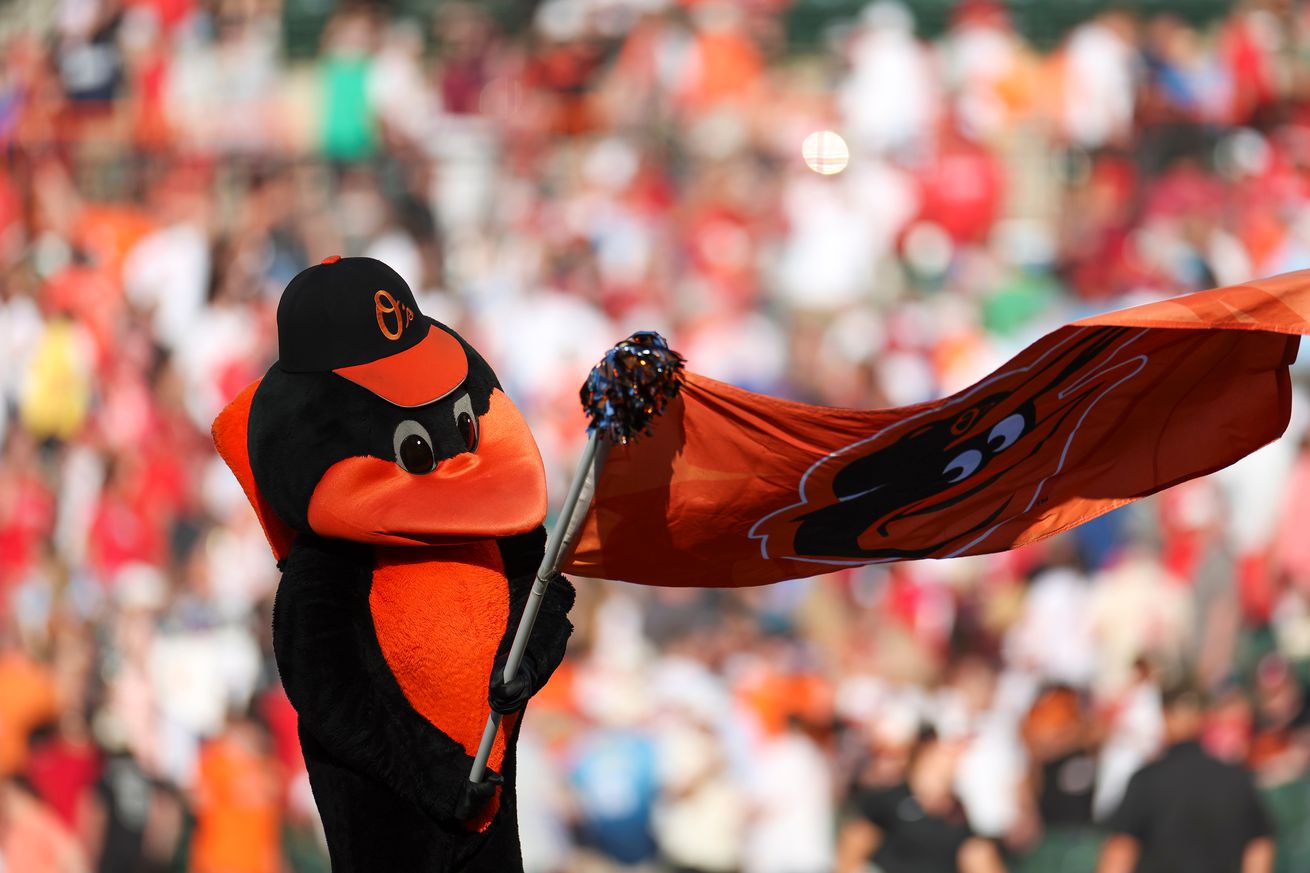
Esteban Mejía and his 102-mph fastball are turning heads.
If I learned one day that Mike Elias has a “TINSTAPP” tattoo on his forearm, I wouldn’t be shocked. Few teams in MLB seem to so completely embody the mantra, “There is no such thing as a pitching prospect” as the Baltimore Orioles. Since Mike Elias took over, the Orioles have never taken a pitcher higher than the 63rd pick. And while the Orioles farm system has gotten some kudos in recent years, it’s generally not for the quantity and quality of its pitchers.
Which is why Wednesday’s news that the Orioles have a new MLB Top 100 prospect—a pitcher!—deserves yelps of excitement. Meet right-hander Esteban Mejía, who just joined catcher Samuel Basallo and infielder Coby Mayo as Baltimore’s third top 100 prospect in the farm system, per Baseball America, and now its highest-ranked pitcher, despite being just 18. Mejía was signed in winter ‘24 as a 16-year-old, already with a “mid-to-upper 90s” fastball and a three-pitch mix. He’s a product of the Orioles’ recently opened state-of-the-art baseball academy in Guerra, Dominican Republic, completed in January 2024.
Those who have seen the Orioles’ exciting new prospect pitch in the Florida Complex Leagues—admittedly, still not many—like what they see. Baseball America’s Josh Norris enthused that Mejía has a talent that makes you “forget about the heat, the humidity and the jagged quality of [FCL] play and demand[s] your full attention.” Norris reports that the righty is “armed with the body, athleticism and pitch package that allow evaluators to dream big,” “produces outings that burrow in your brain and stay there for weeks,” and has a ceiling so high that seeing it “requires binoculars.”
Standing at 6-foot-3 and clocking in at about 175 pounds, Mejía doesn’t cut the most imposing figure, but he’s also 18, and has plenty of room to add to his frame. His four-seam fastball lives in the upper 90s and has hit 102 mph on the radar gun. Since signing with the Orioles, he’s added a two-seam fastball, and apparently he can command it, either for strikes or burying it in the dirt as a devastating “feet-seeking missile against righthanders,” according to Norris. In addition to those two heaters, he’s got a low-90s changeup with hard fade and a slider with sharp three-quarters bite.
Here’s a look at him, courtesy of Norris’ social media account. There’s no doubt the stuff is electric, with the two-seamer looking particularly nasty to me.
On my last day in Florida, I saw #Orioles lightning-armed RHP Esteban Mejia, who ran his fastball up to 102 mph and struck out seven over 4.2 innings of two-run ball. All of Mejia’s pitches have the potential to be between 60-80 on the 20-80 scale. Electric is an understatement. pic.twitter.com/OdZrsOK2Ba
— Josh Norris (@jnorris427) June 27, 2025
Through eight starts in the Florida Complex Leagues, Mejia has a 2.51 ERA with 41 punchouts in 32.1 innings. He’s put up seven or more strikeouts in three of his last four starts, and opponents are batting just .210 against him. Control has been an issue, as he’s walked 18, and hasn’t gone past the fifth inning in any of his starts.
Still, he’s got one of the highest ceilings in the minor leagues, and now people are talking about him. ““Mejia has been the buzz of the Florida Complex League,” says Baseball America editor J.J. Cooper. “His delivery isn’t picture perfect, and he needs to refine his control, but there are few pitchers with three potentially plus pitches.”
Orioles director of pitching Forrest Hermann added that Mejía’s ability to add the two-seamer has been “awesome this year,” plus he’s undergone a velocity increase. With that, and a longer arm action, the 18-year-old “really had to learn how to throw strikes” again, but he very much has succeeded thus far in the FCL season. Add to that his “swing-and-miss, hard, gyro-type of slider” and an up-and-coming changeup, and you have the makings of a top-to-middle of the rotation starter.
Each of his Mejia’s pitches grades somewhere between 60-80 on the 20-80 scouting scale, and his control, though still below-average, could get there with further development. One interesting issue to work on is that Mejía’s arm slot varies on each of his pitches. FCL hitters haven’t been able to exploit this flaw, but full-season hitters might. “That’s part of polishing up a lot of young pitchers’ development over time,” explains the O’s director of pitching. “[T]here are a few different strategies you can see with pitchers later on in development, whether it’s further rounding out an arsenal to windows—as opposed to one release point for all pitches—or learning down the road to repeat those out of the same spot.”
Mejía is still young, still raw, and still pitching in the low levels of pro ball. As he moves up the ladder, his arsenal might evolve. (Norris adds that he might add to his current gyro slider a sweeper, which might be a more natural fit for his lower arm slot and would give hitters a different look to consider.) That, and other changes, will come later. For now, his pitch mix provides, to quote Norris once more, “both rock-solid foundation and one of the highest ceilings in the minor leagues.” Baltimore’s top pitching prospect is fresh enough that he’s not yet ranked in the Orioles Top 30 prospects, but of course he soon will be.
It’s a good reminder that just because the Orioles aren’t expending major draft capital on signing pitching prospects out of the SEC, that doesn’t mean they’re averse to discovering them. And that, despite some head-scratching moves of late, in expanding the Orioles’ Latin American scouting and training presence, Mike Elias has undeniably added value to the franchise.
